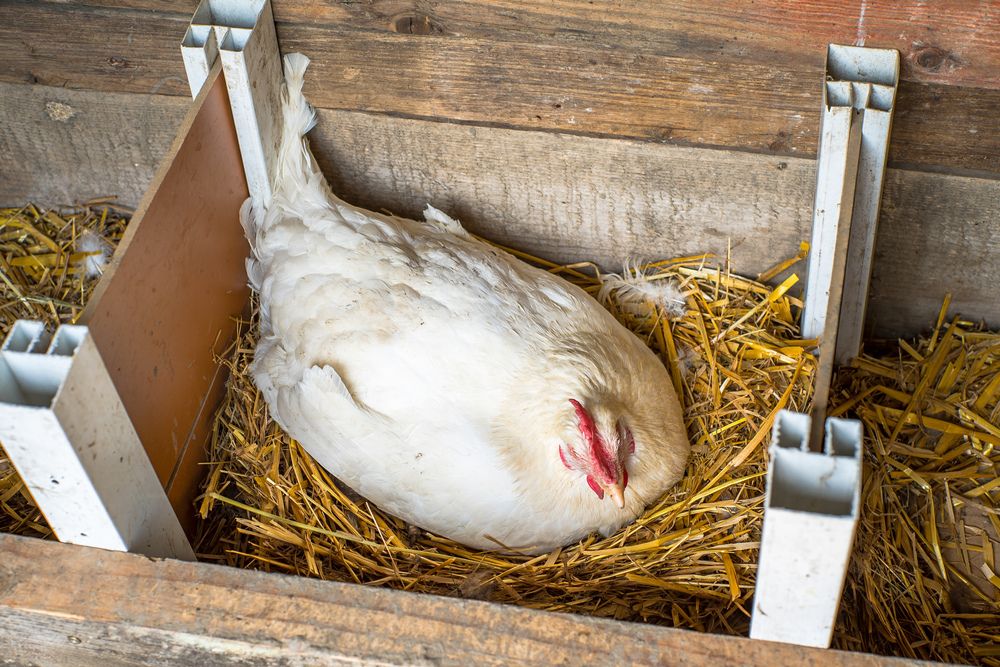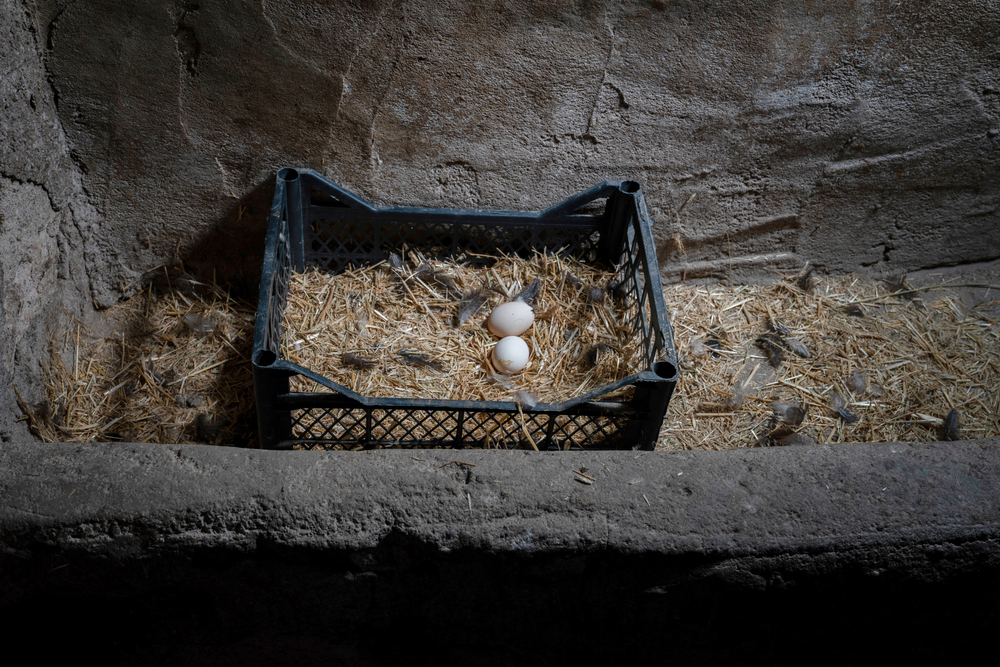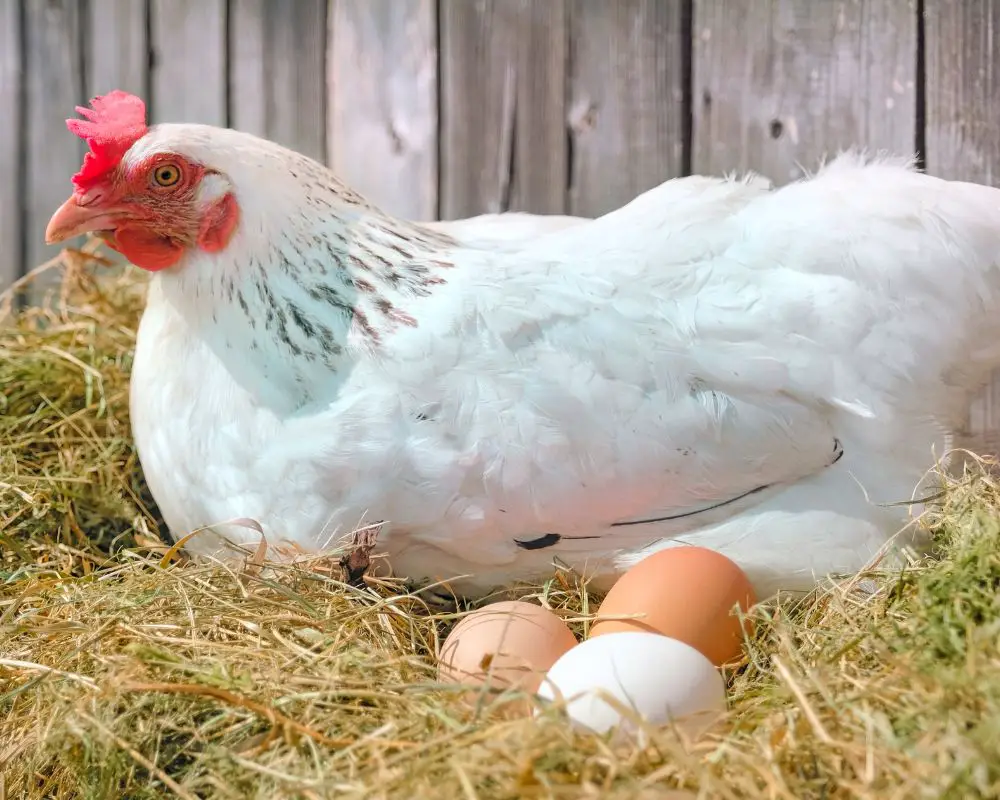3 to 5 hens for every nesting box is an ideal ratio, with some smaller breeds happy to share a box while some larger breeds need more space. Too many nesting boxes may see your chickens turn broody or use a nesting box as a resting area rather than a laying area.
One of the best parts of raising backyard chickens is the bounty of eggs they produce. There are many variables to consider when creating a nesting box that keeps your birds healthy and happy, and most importantly, maximizes your flock’s egg-laying potential.
Table of Contents
How Many Chickens Should Be in a Nesting Box?
3 to 5 hens per nesting box is ideal, however, there are several other aspects to consider beyond the number of chickens you have.
Qualities of your birds such as their breed and size play a big role in determining how many nesting boxes you should have, with each breed reacting differently to a nesting box.
Friendly breeds such as Black Silkies and Cochins are known to get along with one another really well, so more hens will be comfortable with sharing a nesting box. Meanwhile, the Lavender Orpington, despite being friendly with others, they will still need more nesting boxes due to their size.
9 Considerations Before Building Your Boxes
1. Size
14” x 14” x 14” is a standard size for most nesting boxes, with sizes determined by what breed of chickens you are raising.

You’ll want to add a couple inches to each dimension for large breed such as Jersey Giants, whereas with smaller bantam varieties of chicken, you can make your nesting boxes smaller.
2. Number of Laying Hens
As previously stated, the number of hens per box is incredibly important for determining how many nesting boxes you will need. Larger breeds will need more boxes than smaller breeds, and each breed’s personality traits will determine how many birds will be comfortable sharing a singular box.
3. Building Materials
Using non-porous materials to build your nesting box is key to keeping them clean. While building with wood is often easier and more cost-effective, wood as a material can be difficult to keep clean.
Using metal and plastic to construct your boxes will help keep your boxes truly sanitary whenever you clean them out. Between chicken poop and broken eggs, there are many nasty bacterias that your need to be sure are properly disposed of.
4. Bedding
Having quality nesting materials is essential for allowing eggs to be laid safely. Many nesting boxes are lined with soft, organic materials such as sawdust, wood shavings, and grass clippings in order to cushion freshly laid eggs. Having rubber nesting pads placed at the base of each nesting box can help ensure that eggs won’t break.
5. Keep Them Covered
Having an enclosed nest is important for making sure that your hens and eggs stay safe. Predators are always a threat to your flock, so ensuring the safety of your hens while they lay eggs is essential.
6. Keep Them Clean
Cleanliness is key to making sure your hens stay healthy and that your eggs remain clean. Making sure that you build a nesting box that is easy to clean will make a huge difference in the amount of effort you need to put in for upkeep.
Your hens will be happier and will produce more eggs in a clean environment. Letting your boxes grow filthy with droppings will also encourage the growth of bacteria and attract parasites which could lead to serious health issues for your flock.
7. Prevent Roosting
The last thing you need in a nesting box is to have your chickens grow too comfortable in them and start roosting. Roosting inside and on top of the nesting box will cause them to become both dirty and unproductive for egg laying. Having a steep and sloped roof will prevent them from roosting on top.
To prevent inside roosting you’ll want to consistently clean out your nesting boxes. This discourages your hens from growing too comfortable in any given nesting box.
8. Don’t Have Too Many Nesting Boxes
Giving your hens a wide variety of options for where they can lay their eggs might seem like a good thing to prevent overcrowding, but it will likely add to the issues of roosting. You want all of your hens to know that the nesting boxes are there to be shared for laying eggs.
If there are vacant nesting boxes, your hens will start using them as a place to rest instead. Additionally, having all of your eggs spread out across a multitude of boxes will add unnecessary time to the chore of egg collecting.
9. Keep Them Elevated
Mounting your nesting boxes several inches off the ground is a must. Not only will it make your nesting eggs feel more comfortable by providing privacy, but it will also help keep your chickens from needlessly wandering in and disturbing the eggs. If your chickens aren’t great at flying, you can always construct a small ramp to help them get into the box.
Having your nesting boxes off the ground will also make it easier for you to clean them and allows for more airflow through the boxes. You’ll want to make sure that your nesting boxes aren’t too high to resemble a perch to prevent hens from roosting.
Buying Vs. Building Nesting Boxes
Whether you want to take on a DIY project and build your own nesting box or simply go to the store and buy a factory-made one, a good rule of thumb is that the best nesting box will be one that accounts for all 9 attributes described above.

Building a nesting box has the benefit of building to meet your needs exactly. For example, if you have a variety of large and small chicken breeds you’ll be able to accommodate each and every hen in your nesting box’s design.
However, if you aren’t careful with your building materials, you can end up with a nesting box that gets dirty quickly and is difficult to clean. Many DIY boxes are constructed of plywood and 2x4s, both of which are prone to rot if not treated properly.
Store-bought nesting boxes, such as the Harris Farms 2-Hole Metal Nesting Box, are usually easy to assemble and professionally designed for ease of use. You’ll want to make sure they are manufactured with metal or plastic to make cleaning easy. Always consider the breed and size of your chickens when buying a pre-made box, as some may be too small or large for your birds.
Frequently Asked Questions
When Should I Build A Roll-Away Nesting Box?
Roll-away nesting boxes are excellent for making sure that your eggs don’t break. Whether it’s due to eggs colliding with one another in the box or from a hen who has started to eat her own eggs, broken eggs can become a big problem for your nesting boxes.
Even though tactics such as using fake eggs, such as golf balls, can help stop your hens from pecking at her eggs, constructing a nesting box that automatically removes the eggs from the nest is usually the best fix. Also, roll-away boxes will allow for your eggs to collect in one location for easy collection and will overall reduce the total amount of broken eggs.
Where Should I Put The Nesting Boxes?
Nesting boxes should be placed in a part of the chicken coop that is largely undisturbed so your hens have enough space to be comfortable when they start laying their eggs.
A good nesting box should be placed in an easily accessible spot for collecting fresh eggs, otherwise, they are difficult to clean and collect from.
Is It Okay To Have More Than One Nesting Box Per Chicken?
Generally speaking, you don’t want to have more than 1 nesting box per chicken, so giving your chickens options for where they can lay their eggs will only encourage them to roost in your nesting boxes.
Having 3 to 5 of your chickens share a nesting box will actually teach them that they are only meant to use the box for egg laying and will help prevent them from growing broody.

